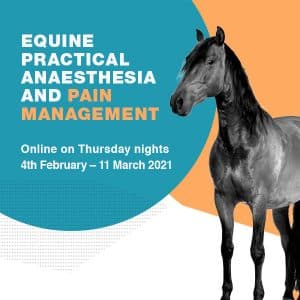The importance of equine veterinary education
When it comes to veterinary science, horses really are a different breed; there is a reason why there are dedicated equine veterinarians and nurses.
Every equine professional knows that when it comes to our equine friends, we never stop learning. We can always improve the way we care, train and ride our horses – and the same can be said for veterinary care. There is always something new to learn, whether it be how to handle that not-so-cooperative 500kg patient, or how to diagnose that elusive lameness that is proving oh-so-hard to pinpoint. Equine veterinary science continues to advance, and therefore so too must the veterinarians and nurses that practise it.

From innovations in diagnostic technology to advances in management and treatment, equine veterinary care is forever evolving
Thanks to ongoing research and the development of new technology, equine veterinary science is constantly evolving.
One of the limiting factors when it comes to equine veterinary care is the horse’s size and our ability to handle them. Being large animals, everything from x-rays to anaesthesia becomes more complicated. In recent times, there has been many advances in technology used to diagnose soundness issues in sport horses – from racehorses to polo ponies and equestrian performance horses, keeping top horses sound and competitive is big business. Portable x-ray machines have long been used in the industry, allowing for veterinarians to image horses on the spot during property visits – rather than the owner having to travel long distances to a facility where an equine-friendly x-ray machine is available. However, it is now possible to go well beyond a traditional x-ray. Standing Magnetic Resonance Imaging (MRI) machines, computerised tomography (CT) scanners and digital lameness locator devices, are among many other technologies, that have all become useful diagnostic tools. As a veterinarian or nurse, understanding when to employ these evolving technologies – and how to interpret results – is important, particularly when working with performance horses.
Technology aside, there are always advances in how we treat common equine ailments. Pituitary Pars Intermedia Dysfunction (PPID – formerly known as Equine Cushing’s Disease) is one such example of how diagnosis and treatment has changed. A decade ago, this condition was not as readily diagnosed and many horses went on to suffer secondary ailments as a result; today, there is far more awareness in terms of recognising the early signs, undertaking simple testing, and implementing appropriate management and medication. More often than not, PPID horses and ponies are able to enjoy a healthy and more comfortable life. This advancement in veterinary knowledge can be seen across many illnesses, from equine metabolic syndrome and insulin resistance, to laminitis, colic and more, and even through general management practices associated with anaesthesia and pain relief.
Just as human medicine continues to advance, so too does veterinary science.
Because when it comes to horses, we never stop learning
As the leaders in continuing education, VetPrac is your leading choice when it comes to keeping abreast of the latest techniques and advances in veterinary science. Our top-class veterinary training packages and workshops provide you with the tools required to hone your skills and knowledge – and they are designed by vets, for vets, nurses and vet techs. With professional insights delivered in a language you understand, VetPrac training seamlessly bridges the gap between learning and doing.
For more information regarding upcoming workshops, visit www.vetprac.com.au/our-workshops, email [email protected] or call +61 409 743 100.
